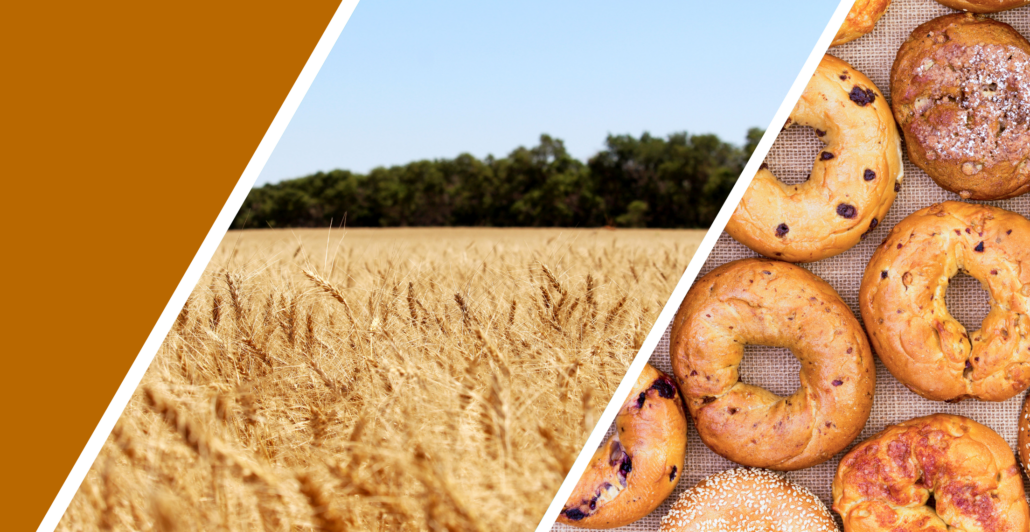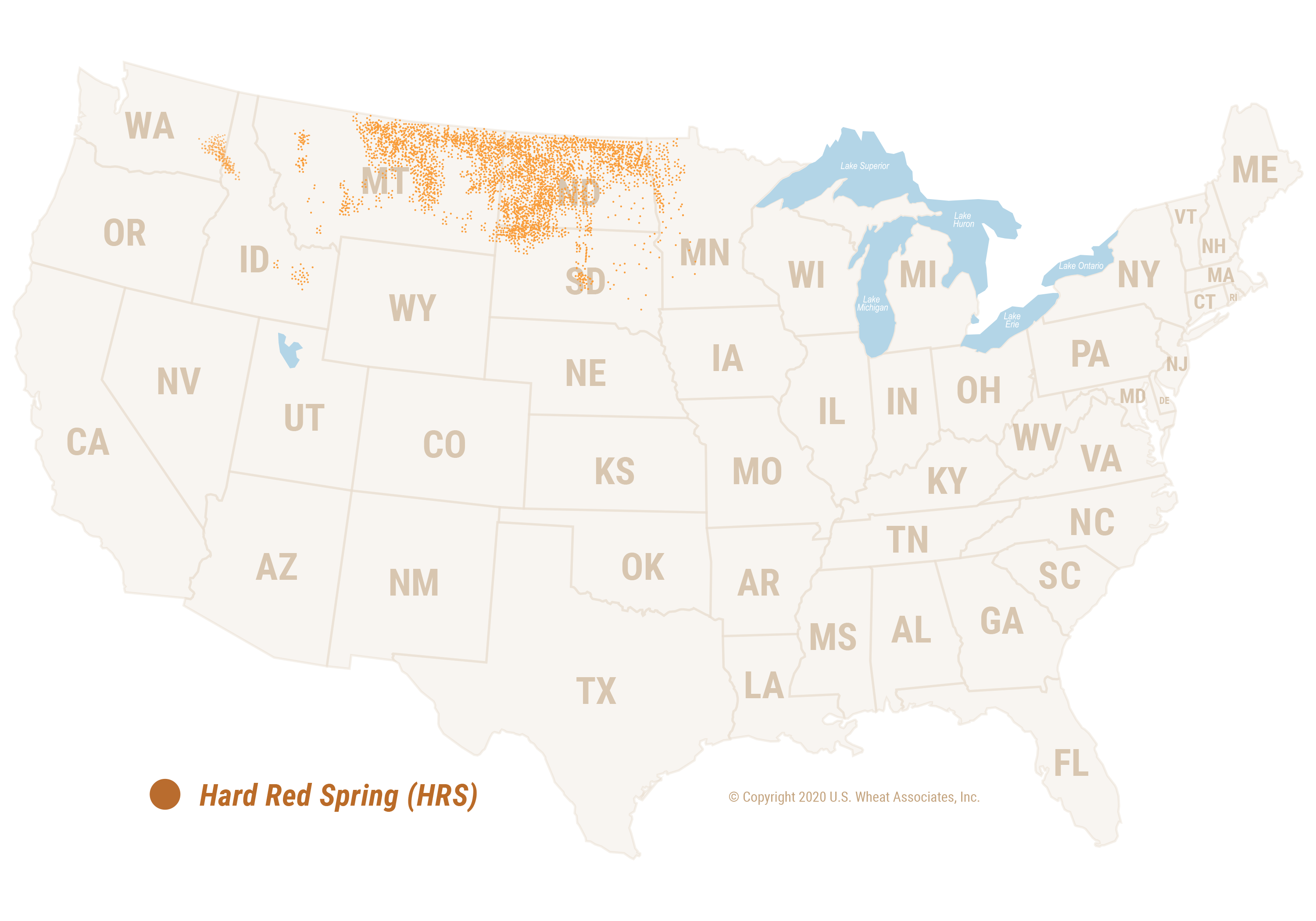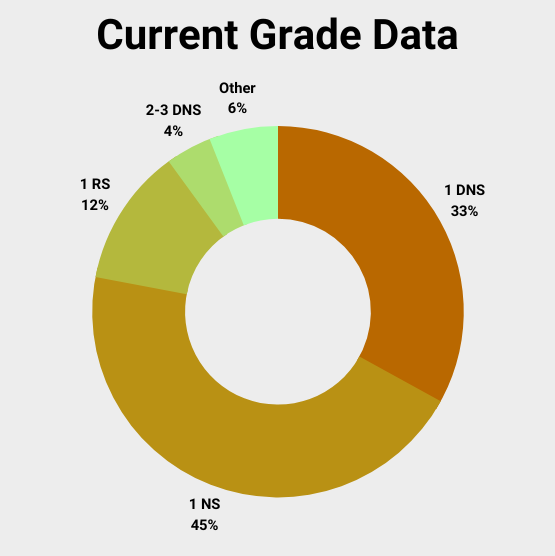The aristocrat of wheat when it comes to “designer” wheat foods like bagels, artisan hearth breads, pizza crust and other strong dough applications, U.S. hard red spring (HRS) wheat is also a valued improver in flour blends. It has high protein of 12.0% to 15.0% (12% mb), hard endosperm, red bran, strong gluten and high water absorption.
For the miller, the reward for incorporating HRS into the grist includes a higher-than-average flour yield from its harder, more compact endosperm. This creates excellent granulation through the break system, providing an abundance of stock to the purifiers producing the maximum amount of low ash, bright color flour.
For the baker, HRS delivers strong dough characteristics used alone or as part of a blend to improve the overall performance of the desired dough. In markets where consumers are demanding a “clean label,” HRS flour blended with HRW or other wheat flour can create better water absorption and loaf volume while reducing or eliminating the use of chemical improvers. And many pasta makers around the world know that when traditional durum wheat semolina is not needed, HRS wheat flour or semolina is a very acceptable alternative.
Where is U.S. Hard Red Spring grown?
Grown primarily in the North Central region, U.S. hard red spring (HRS) is the second-largest class of U.S. wheat. HRS can be exported from the Pacific, Gulf, and Great Lakes ports.
Please select your preferred language, report, and year, and click View Reports.
2023 U.S. Hard Red Spring Production
According to USDA’s Small Grains Annual Summary released September 29, 2023, production of the 2023 U.S. HRS crop is estimated to be 12.7 million metric tons (MMT), a 5% increase from last year’s 12.1 MMT and above the 5-year average of 12.5 MMT.
- 2023 (MMT)
- Total HRS production in states sampled*
- PNW-exportable subtotal
- Gulf/Great Lakes-exportable subtotal
- Total U.S. HRS Production
- 2023 (MMT)
- 12.7
- 6.4
- 6.3
- 12.7
- 2022 (MMT)
- 12.1
- 5.9
- 6.3
- 12.1
- 5-Year Average (MMT)
- 12.5
- 6.4
- 6.1
- 12.5
*States sampled: Idaho, Minnesota, Montana, North Dakota, South Dakota and Washington. Numbers may not match exactly due to rounding.
2023 U.S. Hard Red Spring Crop Quality Data Highlights
The 2023 U.S. HRS crop has many positive attributes, including higher production, good protein levels, little to no DON, strong dough properties and improved bake parameters. Vitreous kernel (HVAC) content is notably lower than 2022 levels, which may be a challenge for some. Buyers can buy with confidence, but diligent contract specifications are still the best way to get the quality demanded.
U.S. HARD RED SPRING AVERAGE COMPOSITE DATA HIGHIGHTS
The table below provides highlights of total crop “Composite” averages. For full quality results, please see the 2023 U.S. Wheat Associates Crop Quality Report.
- 2023 Average
- Test Weight (lb/bu)
- Test Weight (kg/hl)
- Vitreous Kernels (%)
- Moisture (%)
- Wheat Protein (%) 12% mb
- Wheat Protein (%) 0% mb
- Wheat Falling Number (sec)
- DON (ppm)
- 2023 Average
- 61.2
- 80.5
- 52
- 12.2
- 14.2
- 16.2
- 379
<0.5
- 2022 Average
- 62.1
- 81.6
- 74
- 11.6
- 14.3
- 16.2
- 386
<0.5
- 5-Year Average
- 61.6
- 81.0
- 73
- 11.9
- 14.6
- 16.6
- 376
<0.5




